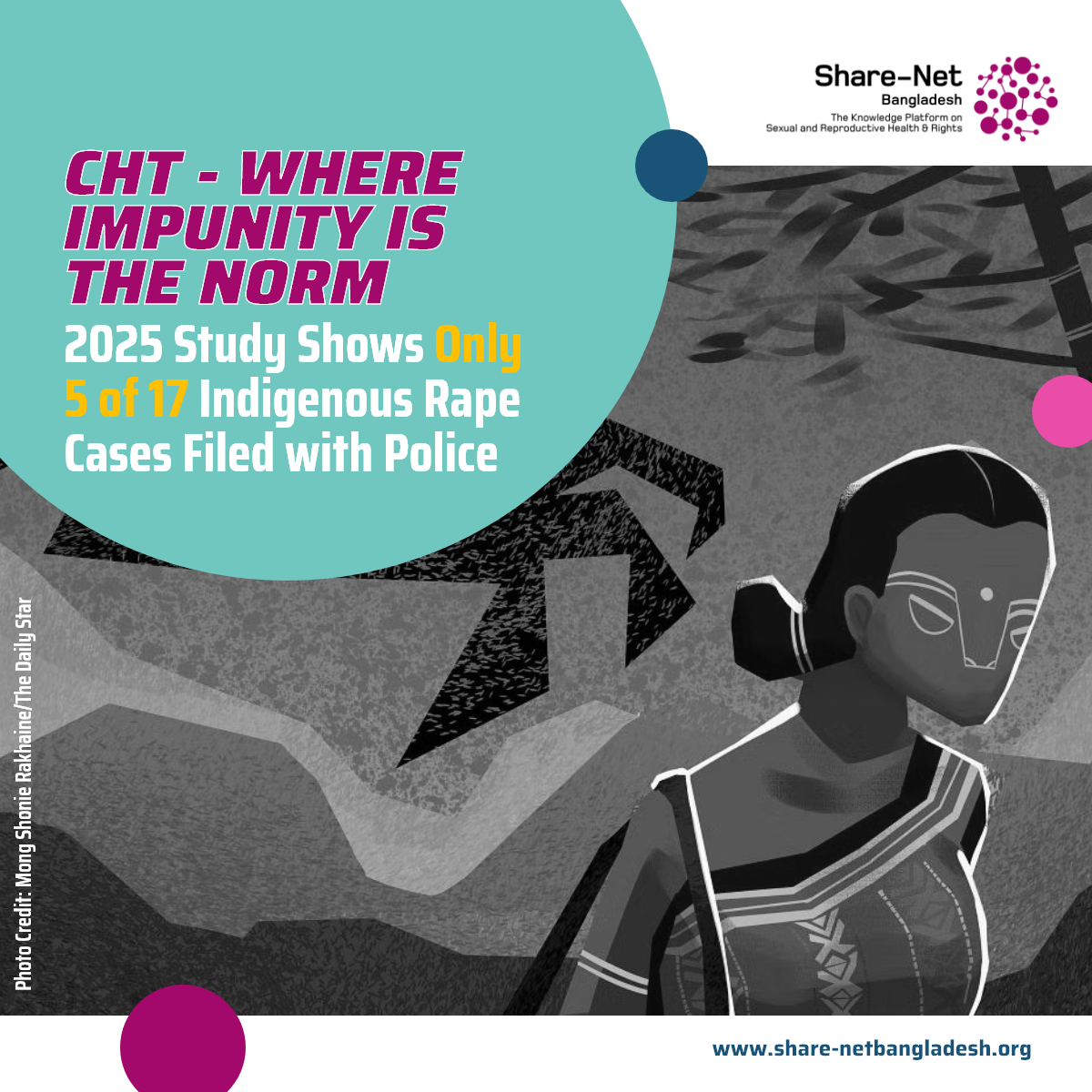CHT – Where Impunity is the Norm: 2025 Study Shows Only 5 of 17 Indigenous Rape Cases Filed with Police
Every now and then, headlines erupt with horrific stories—few, however, expose the deep-rooted crisis affecting Indigenous women in Bangladesh. The recent case in Khagrachhari, where a seventh‑grade Tripura girl was allegedly raped by her teacher, Abul Hasnat Muhammad Sohail Rana, and his subsequent death after community retaliation, sparked inter‑communal violence. Temples were looted, homes burnt, and a hospital vandalised—yet the personal trauma of Indigenous women remains unseen.
Doctors reportedly found sexual assault evidence, but systemic failures began earlier: Rana had prior rape allegations in Kushtia and was merely transferred, not disciplined. Indigenous activists ask: Was CHT turned into a “dumping ground” for those with tarnished records?
Despite human rights groups like IWGIA and BIWN reporting dozens of violent incidents—25 rape or attempted rape cases in 2020 alone in CHT—justice remains elusive. Between January and June 2021, 37 Indigenous women were victims of violence in 33 incidents, nearly half in the CHT, with rape and attempted rape the most reported crimes. A chilling 95 percent of survivors in CHT feared stigma; 60 percent did not seek legal help (iwgia.org).
This case illuminates deeper challenges around Sexual and Reproductive Health and Rights (SRHR), sexual violence and reproductive rights. Indigenous women’s bodies become arenas of cultural violence, intended to disrupt their language, culture and autonomy. “Our wombs are targeted to disrupt the transmission of Indigenous ways of life,” writes one Adibashi woman.
Journalism too has failed them. A new study by Abhijit Paul et al. (June 2025) found negative framing in 57 percent of indigenous-related news and under‑representation of their social rights struggles (ARXIV, Cornell University).
Meanwhile, community‑based innovations like the “Our Lives, Our Health, Our Futures” programme have empowered over 12,000 adolescent girls and young women in Bandarban, Rangamati and Khagrachari. Trained gender focal points and local clinics now offer SRHR education and safe referral pathways in collaboration with BNPS and EU support (Ending violence against indigenous women and girls in the Chittagong Hill Tracts, Bangladesh – Simavi)
Despite this progress, stark numbers remain. A 2020 survey by Manusher Jonno Foundation revealed that 44 percent of ethnic minority women in CHT have experienced domestic violence in their lifetime—33 percent physical, 38 percent mental, and 5 percent sexual (‘Indigenous In the Edge’ by MJF, 2020). Another 2021 UNDP‑affiliated study estimated 42–45 percent prevalence of gender‑based violence in hill districts by 2020, rising trends despite awareness (The Pattern of Sexual Violence among Women and Children in the Hill Tracts of Bangladesh: An Unveiled Truth-2023; ResearchGate)
To end impunity, advocates demand constitutional recognition of Indigenous peoples, including ratification of ILO Convention 169 and gender‑disaggregated data collection by the government. Demilitarisation of CHT, eviction of illegal settlers, and gender-sensitive development must follow as per the 1997 CHT Peace Accord IWGIA.
The Khagrachhari case is not an isolated incident—it’s a moment that forces attention on a silent epidemic. Breaking this invisibility requires better data, legal reform, healthcare access, and genuine inclusion of Indigenous women in policy decisions. Only then can the sexual and reproductive rights of Adibashi women move from rhetoric into reality.
Source: The Indigenous World 2025 by IWGIA
Photo Credit: Mong Shonie Rakhaine/The Daily Star

